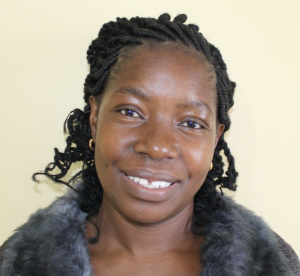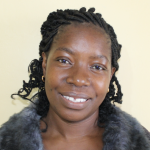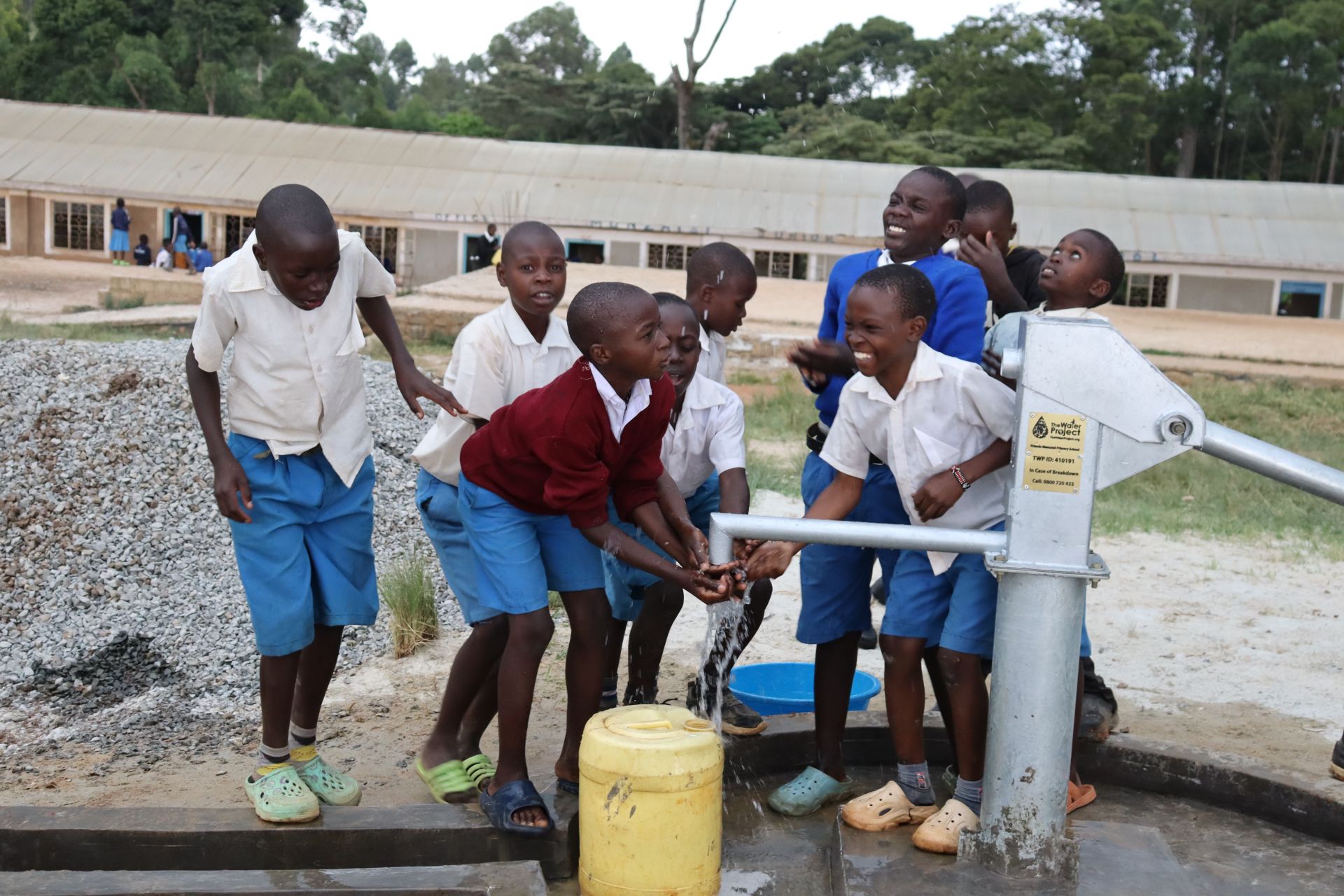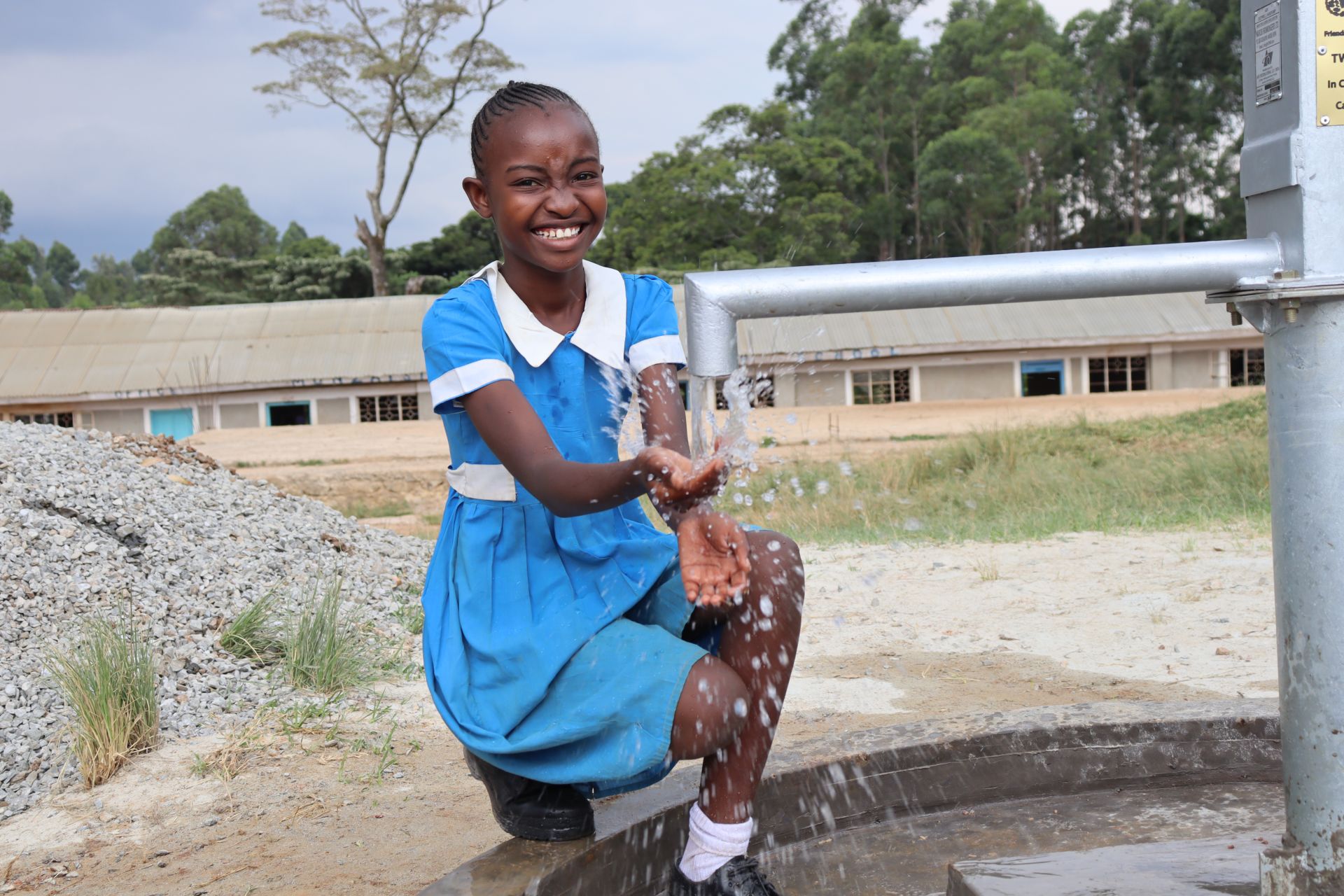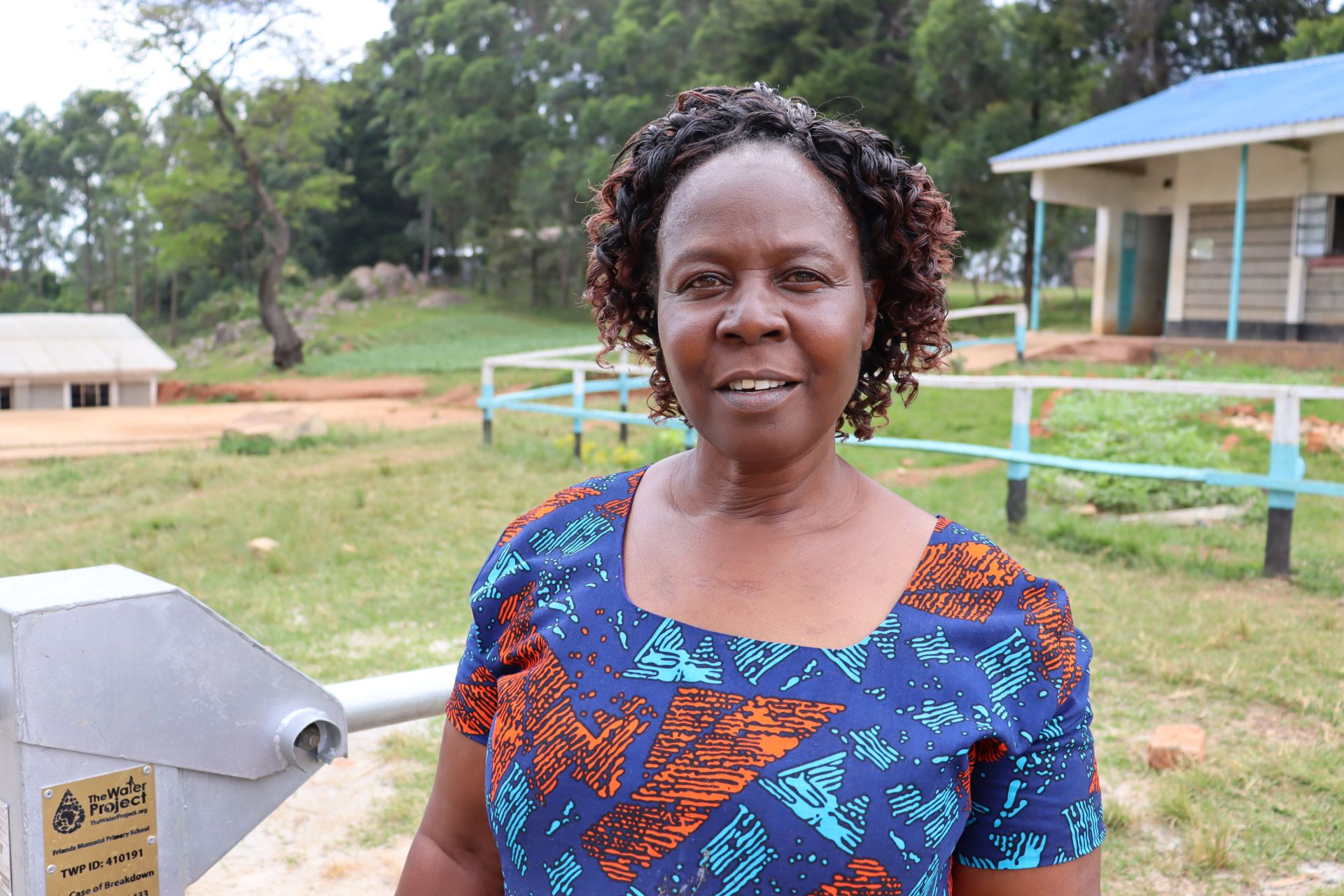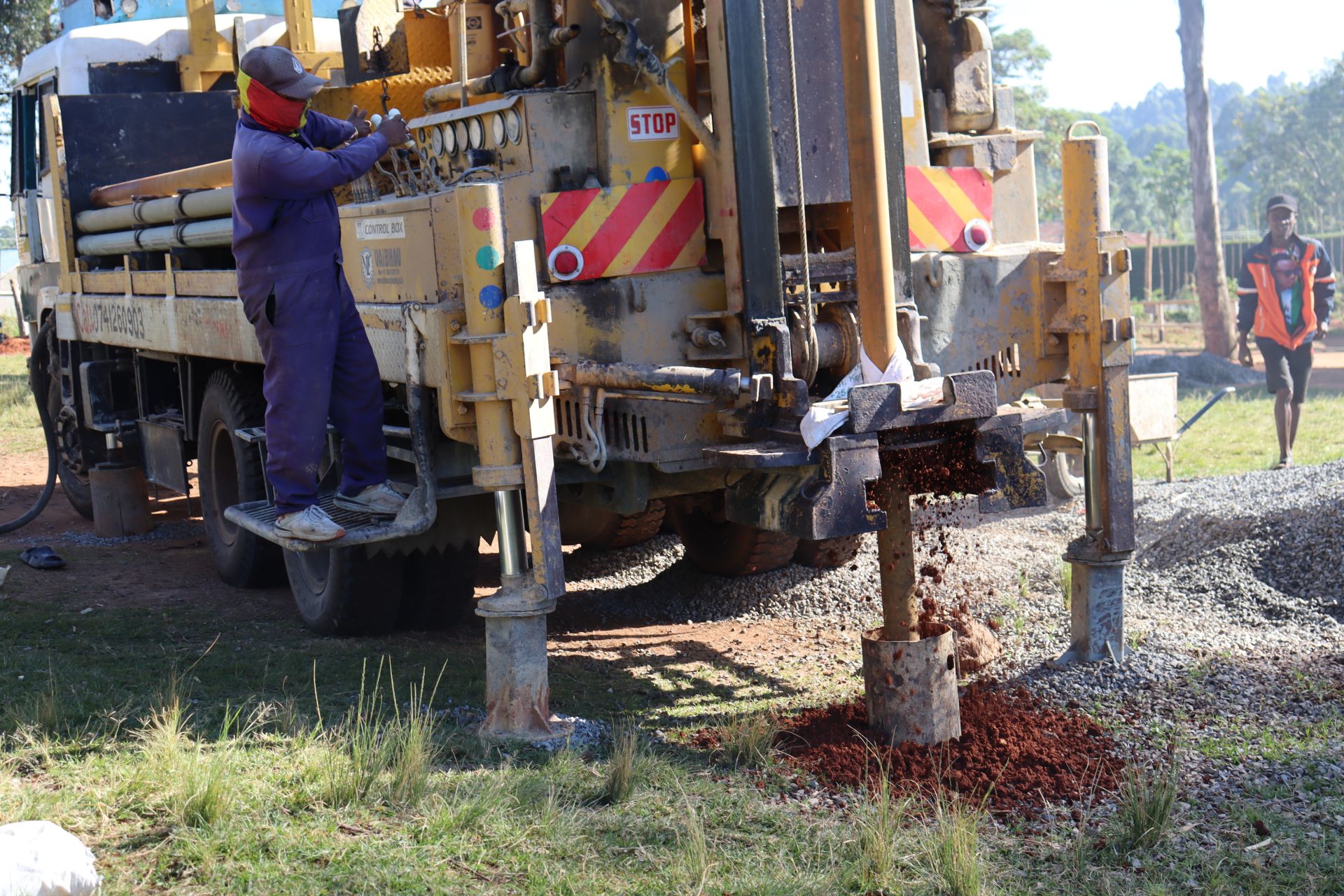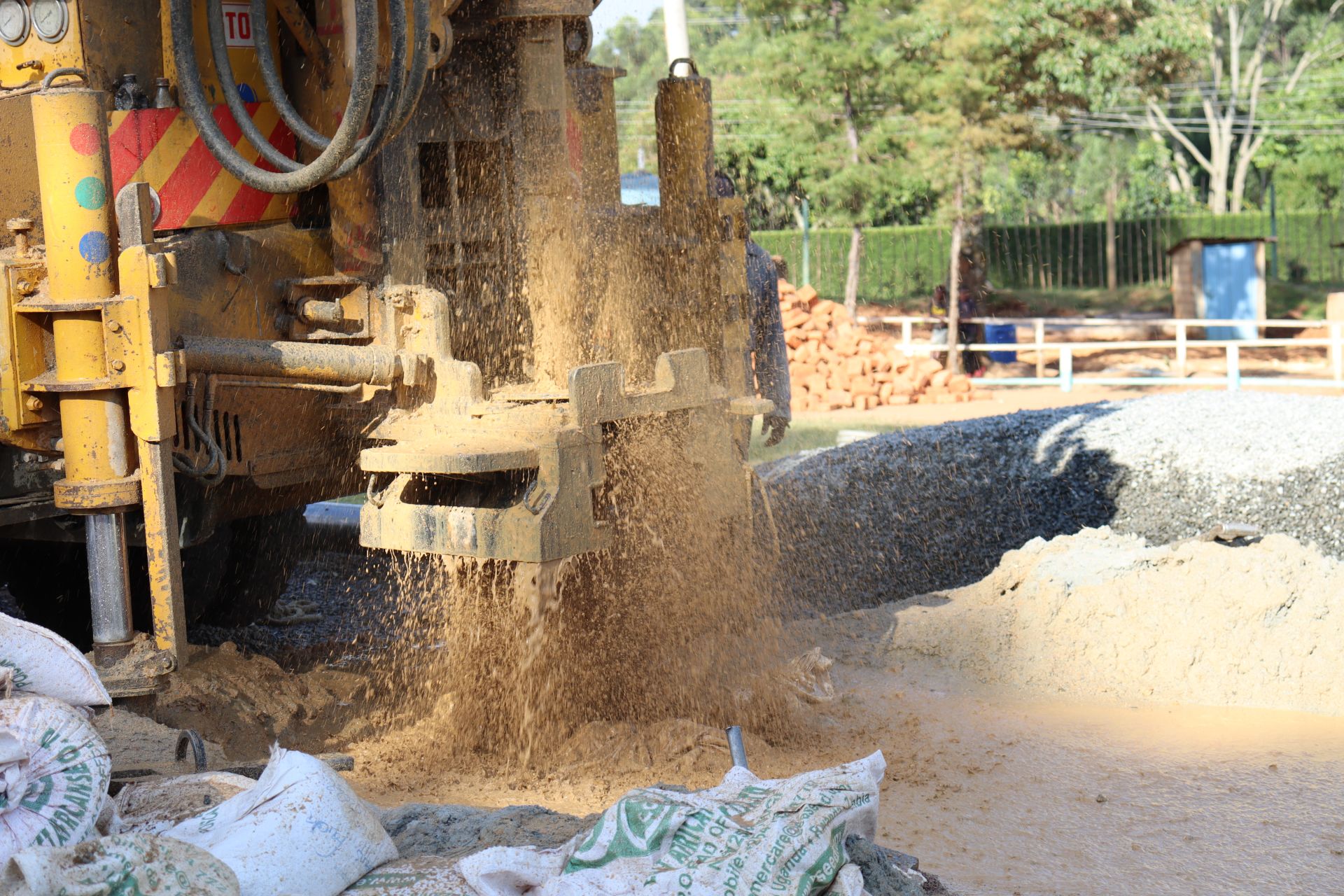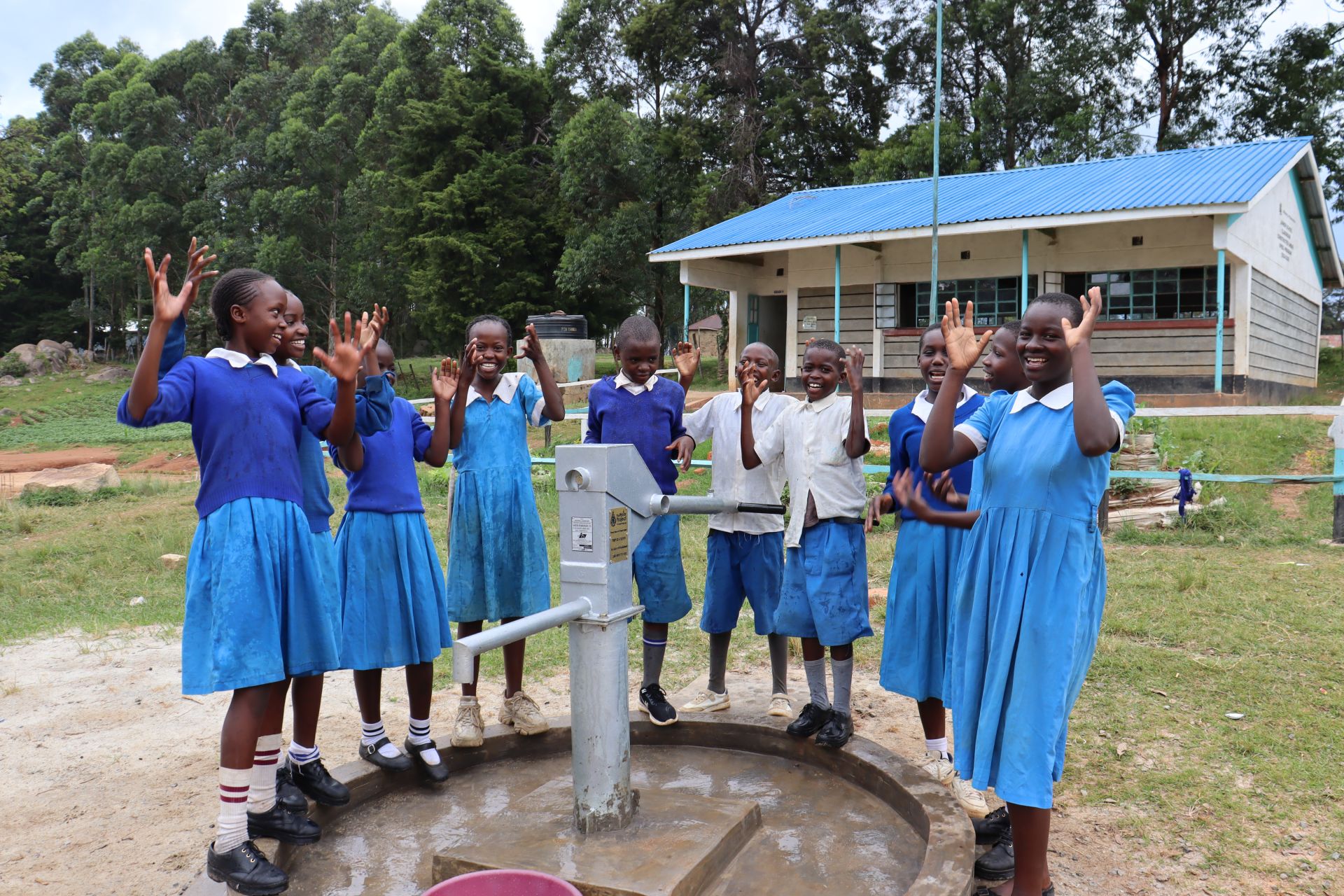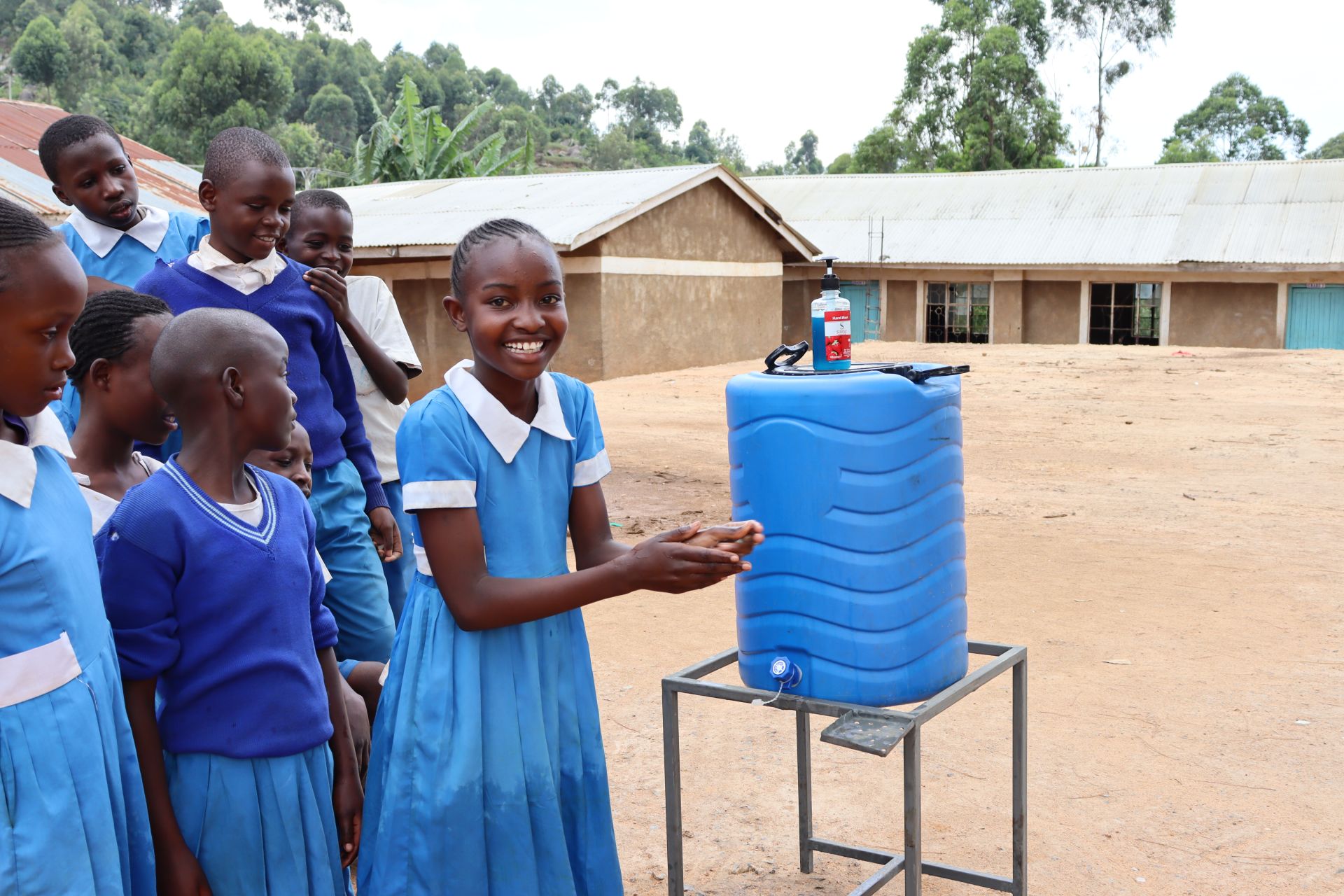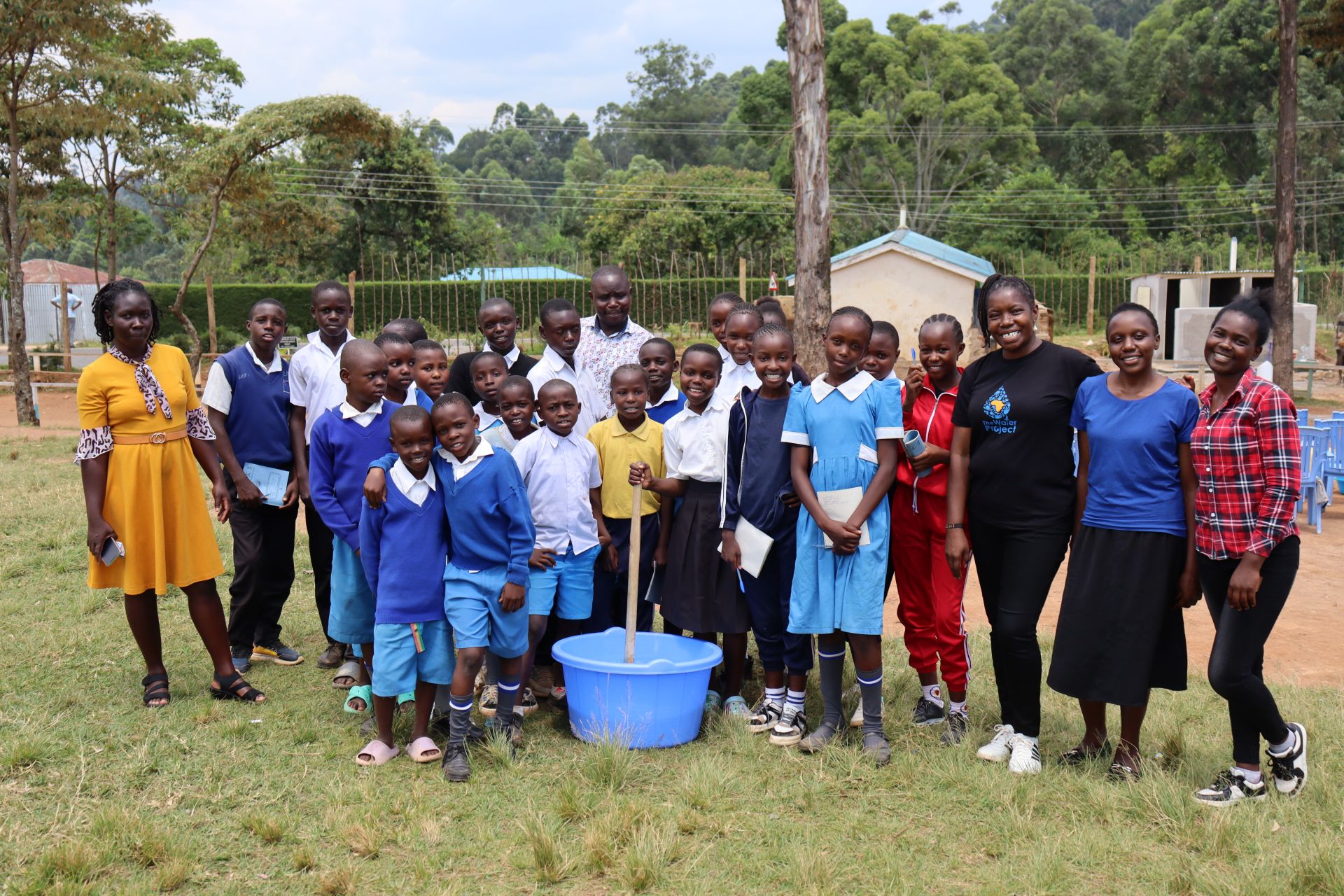At the Friends Munzatsi Primary School, there are 433 students and 27 staff members. Every day is a struggle, as they have no reliable water source. The neighboring secondary school has a dug well, and they pump water into a storage tank for the primary school. This is an expensive solution that is often rationed, limiting the water available to students. They can collect rainwater but that is only available seasonally. When the rainwater is gone, they have no option but to make an arduous journey to a partially protected spring shared with the community.

Heading to the spring to fetch water.
Eleven-year-old Tracy is a determined young woman. She must be as she tries to survive her school's water crisis.
"Our school has a population of over 400 pupils depending on two unreliable water points; this leads to long queues as each student waits for their turn to collect water. Distance to the alternative water source, the partially protected spring, is a bit long, which contributes to the longer time required to fetch water. It also takes more time to fill up containers since the water from the discharge pipe is low," Tracy shared.

Tracy collects water from the spring.
As Tracy described, due to the size of their school, they experience heavy overcrowding, which makes an already time-consuming process even longer.
"Fetching water takes up my time that would otherwise be spent on learning and revision. It also causes exhaustion and [a] lack of concentration in class after carrying heavy containers of water. This impacts my ability to prepare for exams, which in turn affects my class performance," Tracy continued.

Students waiting for their chance to collect water.
Water is a vital resource, often taken for granted when access is easy. But Tracy feels the weight of the water crisis on her young shoulders.
"It is frustrating and stressful because fetching water takes time away from my studies and playtime. It also makes me feel unfairly burdened at such a young age but since water is essential for all of us, I have to get it for proper running of the school and for drinking too. My only wish is to have access to reliable, clean, and safe water in school as soon as possible," Tracy expressed.
Many students feel that way at the Friends Munzatsi Primary School. Emotions run high as needs go unmet, causing quarrels between students and sometimes community members.
"Older students tend to bully us at the waterpoint. Since we cannot match up to their strengths, we end up wasting time as we wait for them to leave before we access the water point. Scrambling at the waterpoint as we try to access water and go to class on time leads to injuries. Carrying heavy jerricans can also cause muscle strains and accidents on uneven and steep paths," she continued.

Students carrying heavy jerricans back to school.
Installing a well on campus will begin to alleviate the hardships that Tracy faces. With a reliable well that is easily accessible, she won't have to wonder where she will get water every day. No more trekking uphill and far away. Tracy will gain back the time she needs to focus on her education, her childhood, and her goals. That is crucial because Tracy has big plans.
"My dream is to be a teacher and become empowered economically so that I can advocate for the equal rights to education for girls in our community, who are often less involved in the decision-making processes that affect their society," she concluded.

Tracy.
Steps Toward a Solution
Our technical experts worked with the local community to identify the most effective solution to their water crisis. They decided to drill a borehole well, construct a platform for the well, and attach a hand pump.
Well
Abundant water often lies just beneath our feet. Aquifers—natural underground rivers—flow through layers of sediment and rock, offering a constant supply of safe water. A borehole well is drilled deep into the earth to access this naturally filtered and protected water. We penetrate meters, sometimes even hundreds of meters, of soil, silt, rock, and more to reach the water underground. Once found, we construct a platform for the well and attach a hand pump. The community gains a safe, enclosed water source capable of providing approximately five gallons of water per minute. Learn more here!
Handwashing Stations
Alongside each water source, we install two gravity-fed handwashing stations, enabling everyone at the school to wash their hands. Handwashing is crucial for preventing water-related illnesses within the school and community. Student “health clubs” maintain the stations, fill them with water, and supply them with soap, which we often teach them how to make.
Latrines
We will construct two Ventilated Improved Pit (VIP) latrine blocks designed to prevent fecal disease transmission. Each latrine features a cement floor, making it easy to use and clean regularly. Three stalls will serve the girls, and three will serve the boys.
School Education & Ownership
Hygiene and sanitation training are integral to our water projects. Training is tailored to each school's specific needs and includes key topics such as proper water handling, improved hygiene practices, disease transmission prevention, and care of the new water point.
To ensure a lasting impact, we support forming a student health club composed of elected student representatives and a teacher. These clubs promote hygiene practices schoolwide and keep handwashing stations well-stocked. This student-led model encourages a sense of ownership and responsibility.
Safe water and improved hygiene habits foster a healthier future for everyone in the school and the surrounding community.

 Borehole Well and Hand Pump
Borehole Well and Hand Pump
 Rehabilitation Project
Rehabilitation Project












